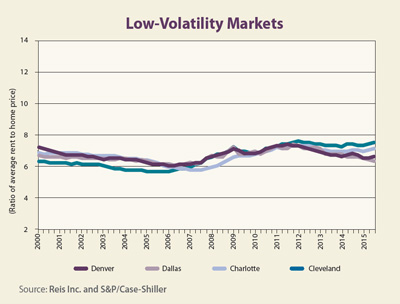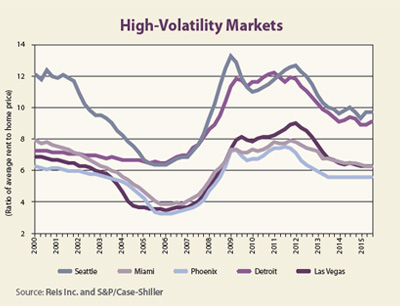Originally posted by Barbara Byrne Denham | Mar 2, 2016 discussing the relationship between rents and home prices.
The apartment market, more than any other property type, has seen tremendous growth over the past few years. The economic recovery is expanding the workforce and creating more housing demand, while millennials, who represent a huge slice of that workforce, are choosing to rent longer — putting off starting families and preferring to live within a walking or transit-commuting distance to work.
These trends increased average rents 4 percent per year, on average, from 2012 through 2015 — including a rate of 4.5 percent in 2015 alone, according to the latest Reis Inc. data.
Developers were quick to note the rebound in apartment demand. They started building early in the recovery, and they have not slowed down. As the supply of new product has started to overwhelm demand, vacancies are starting to climb in a number of markets, even gateway cities such as Washington and Boston. Although rent growth is still positive in these and most markets, the rate of increase has slowed and will continue to decelerate as supply will continue to exceed demand over the next few years.
Consumers perennially face the inevitable question of whether they should rent or buy. Recent trends have suggested that this question has as much to do with demographics as economics. Still, shifting price trends can tip the balance with respect to the decision to rent an apartment or purchase a home.
An analysis of the relationship between rents and home prices in the major U.S. metro areas included in S&P/Case-Shiller’s 20-city index offers some interesting insights into market trends. (See the High-Volatility and Low Volatility market charts.)
This article was originally posted to REIS and can be found HERE.



